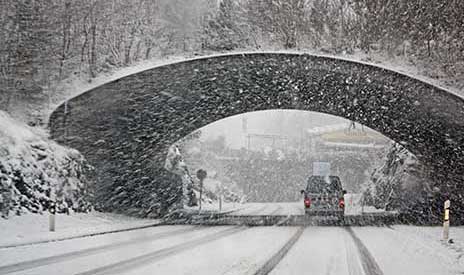Early Winter Weather

Early winter weather struck mid-Missouri late last month. While temperatures remained near 20 degrees with wind chills in the single digits, snow moved into the region. The City of Columbia preemptively deployed a 16 man plow crew. Meanwhile, the City of Sedalia declared a snow emergency. Interstate 29 from north of St. Joseph to the Iowa state line was closed. The Columbia Water and Light outage map showed 1,424 customers lost power, mostly on the western side of the city. Highway VV at Mauller Road was closed due to a tree falling on a power line. The intersection of Vandiver Drive at Parker Road was closed due to snow and ice covering the street. In addition, WB 70 near Route 13 at Higginsville was closed due to a crash. 1-70 from Kansas City to the US-65 Marshall Junction became impassable with numerous crashes, stranded motorists, and haulted traffic. In Cooper County at the 95-mile marker 1-70 became blocked by a tractor trailer. While 1-70 west of Columbia was treacherous due to the winter storm, St. Louis had a tornado warning.
Winds reached over 40 mph and while large snow flakes fell, visibility became an issue. Throughout the blizzard warning, travel was not advised. During a five and a half hour stretch Missouri State Highway Patrol Troop F reported 113 weather-related calls for service, 25 crashes, and 50 slide-offs. Only one serious injury was reported, and no fatalities.
Before the next winter storm hits mid-Missouri, take a few moments to review whether your vehicle is best-equipped for driving in wintery conditions:
- Four-wheel drive. Many new crossover models contain automatic four-wheel drive components which kick in when the system recognizes icy or hazardous conditions. All-wheel drive works the same way, but keeps the vehicle in four-wheel drive no matter what the road conditions are. Even though these systems generally use more fuel, they are safer for slick commutes.
- Clearance. An additional benefit of crossover or SUV models is additional ground clearance. The more space there is between the bottom of the car and the road, the better equipped the vehicle is for winter conditions. Obviously, the more snow there is on the ground, the more clearance that is required. Meanwhile, sports cars typically have clearance of 4 to 6 inches and SUVs have clearance of 6 to 8 inches.
- Winter Tires. Stability control and brakes only work properly if the vehicle’s tires have grip on the road. Special winter tires have edges for improved bite and traction. These tires have the best effect when a small amount of precipitation is on the roadway. Many newer models also have automated systems with settings designed for winter-weather travel.
In addition to the 3 above features, it is a good idea to remember no safeguards can completely protect you from winter-weather accidents. Drivers should always slow down, remain attentive to danger, and buckle up. If you have questions or are involved in a winter-weather accident, give us a call at Bley & Evans Trial Attorneys at (844) 443-8385.



